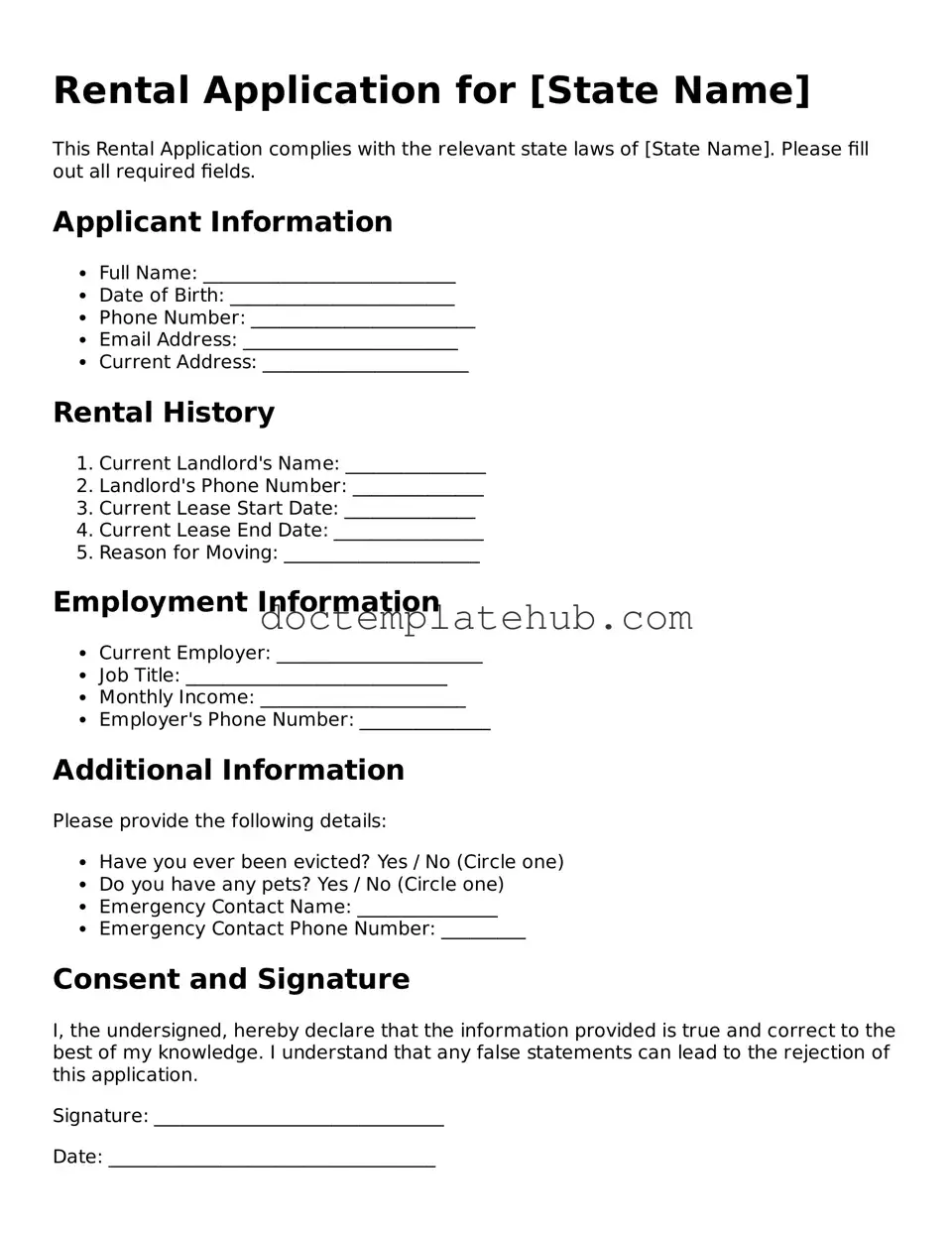What is a rental application form?
A rental application form is a document that potential tenants fill out when they wish to rent a property. This form collects essential information about the applicant, including their personal details, rental history, employment status, and financial background. Landlords and property managers use this information to assess whether an applicant is a suitable tenant for their property.
Why do I need to fill out a rental application?
Filling out a rental application is a crucial step in the leasing process. It helps landlords evaluate your qualifications as a tenant. By providing your background information, you give them insight into your reliability and ability to pay rent on time. A well-completed application can set you apart from other applicants, increasing your chances of securing the rental you desire.
What information do I need to provide on the rental application?
Typically, a rental application will ask for a variety of information. You will need to provide your full name, contact information, and Social Security number. Additionally, expect to share details about your employment, including your employer's name and your income. Rental history, references, and possibly a credit check may also be part of the process. Be prepared to answer questions about any previous evictions or criminal history, as these can influence a landlord's decision.
How long does it take to process a rental application?
The processing time for a rental application can vary. Generally, landlords aim to complete the review within 24 to 72 hours. However, this timeline can be affected by several factors, such as the thoroughness of your application, the speed at which references respond, and the landlord's workload. It's always a good idea to follow up if you haven't heard back within a few days.
What happens if my rental application is denied?
If your rental application is denied, you have the right to know why. Landlords are required to provide a reason, which is often based on credit history, income verification, or rental history. If you believe the denial was unjust, you can request a copy of your credit report to check for errors. In some cases, you may also be able to appeal the decision or provide additional information to support your application.
